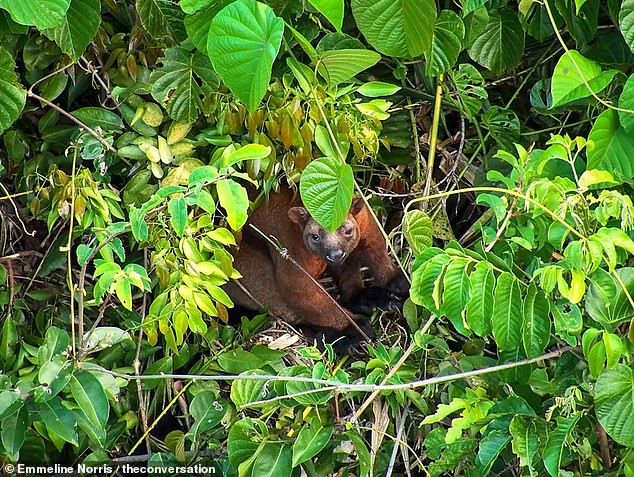
Pioneering Drone Study Uncovers Australia’s Rarest Marsupial
Breakthrough Study Uses Drones to Spot Australia’s Rare Tree Kangaroos
By Emmeline Norris for The Conversation | Updated: 14:52 GMT, 8 February 2025
Bennett’s tree kangaroos, among Australia’s most elusive marsupials, are finally being studied with groundbreaking efficiency thanks to thermal drones. Published in Australian Mammalogy, our research reveals how this technology is transforming efforts to conserve these enigmatic creatures.
Elusive Icons of the Rainforest
Found only in Australia’s Far North Queensland and New Guinea, tree kangaroos thrive high in rainforest canopies, feeding on leaves and vines. Unlike their ground-dwelling relatives, they rarely descend, making them nearly invisible to traditional survey methods. Of the 14 tree kangaroo species, 12 are threatened by deforestation and climate change. Yet, their secretive habits have left scientists with scant population data—until now.
[Image: A Bennett’s tree kangaroo peers out from dense foliage. Caption: The elusive Bennett’s tree kangaroo, a master of camouflage in Queensland’s rainforests.]
Thermal Drones: A Game-Changer
Using infrared cameras, thermal drones detect body heat through thick rainforest foliage, allowing researchers to spot animals from the air. In our study, three flights at Cape Tribulation’s Daintree Rainforest Observatory detected six tree kangaroos in under an hour—a remarkable outcome compared to traditional ground surveys, which often take days to spot one.
“Drones provide a non-invasive way to observe behavior, like feeding patterns, without disturbing them,” says lead researcher Emmeline Norris. The drones even captured groups of three kangaroos, offering insights into their social habits.
[Image: Thermal drone footage showing heat signatures of three kangaroos in a tree. Caption: Thermal imaging reveals hidden tree kangaroos in the canopy.]
Surprising Findings and Conservation Hope
The study confirmed that Bennett’s tree kangaroos are thriving in Cape Tribulation’s lowland rainforests. Drone footage also documented their diet, including mile-a-minute and fire vines. However, their reliance on specific plants underscores vulnerability to habitat loss.
[Image: Researcher Emmeline Norris prepares a drone. Caption: Researchers deploy thermal drones to monitor tree kangaroos in remote rainforests.]
Next Steps for Conservation
While these findings are promising, systematic surveys are needed to assess population trends across different habitats. Thermal drones could revolutionize conservation efforts for tree kangaroos and other cryptic species, offering hope for protecting Australia’s unique biodiversity.
For more updates on climate and wildlife conservation, follow @MailClimate on Instagram or X.
Share or comment on this article:
One of Australia’s rarest marsupials spotted as drone technology allows groundbreaking new study
Images sourced from the study illustrate the drone technology’s impact. Captions highlight key discoveries.
Word count: ~600


